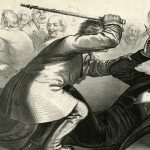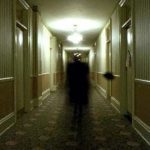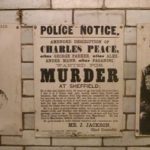 Our World
Our World  Our World
Our World  Movies and TV
Movies and TV The 10 Coolest Stars to Set Sail on The Love Boat
 History
History 10 Things You Didn’t Know About the American National Anthem
 Technology
Technology Top 10 Everyday Tech Buzzwords That Hide a Darker Past
 Humans
Humans 10 Everyday Human Behaviors That Are Actually Survival Instincts
 Animals
Animals 10 Animals That Humiliated and Harmed Historical Leaders
 History
History 10 Most Influential Protests in Modern History
 Creepy
Creepy 10 More Representations of Death from Myth, Legend, and Folktale
 Technology
Technology 10 Scientific Breakthroughs of 2025 That’ll Change Everything
 Our World
Our World 10 Ways Icelandic Culture Makes Other Countries Look Boring
 Our World
Our World 10 Ways Your Christmas Tree Is More Lit Than You Think
 Movies and TV
Movies and TV The 10 Coolest Stars to Set Sail on The Love Boat
 History
History 10 Things You Didn’t Know About the American National Anthem
Who's Behind Listverse?

Jamie Frater
Head Editor
Jamie founded Listverse due to an insatiable desire to share fascinating, obscure, and bizarre facts. He has been a guest speaker on numerous national radio and television stations and is a five time published author.
More About Us Technology
Technology Top 10 Everyday Tech Buzzwords That Hide a Darker Past
 Humans
Humans 10 Everyday Human Behaviors That Are Actually Survival Instincts
 Animals
Animals 10 Animals That Humiliated and Harmed Historical Leaders
 History
History 10 Most Influential Protests in Modern History
 Creepy
Creepy 10 More Representations of Death from Myth, Legend, and Folktale
 Technology
Technology 10 Scientific Breakthroughs of 2025 That’ll Change Everything
 Our World
Our World 10 Ways Icelandic Culture Makes Other Countries Look Boring
The Ten Most Vicious Los Angeles Killers
L.A. Los Angeles. The City of Angels. Whatever you call it, it’s a fascinating place. Los Angeles County draws millions of visitors seeking the sand, sun, and glamour of Southern California, from Hollywood to Malibu to Pasadena. It’s home to movie stars, rock bands, and the exceptionally wealthy. While there’s plenty to love about Los Angeles, it can be dangerous.
With a county population of over nine million—nearly four million people in the City of Los Angeles alone—it’s not surprising that it experiences high crime rates. L.A. has had more than its fair share of brutal and sadistic killers during its two-hundred-year history. From the lowest street thug to the top mob bosses, killers of all kinds walk these city streets. In recent years, TV networks have flooded the airwaves with documentaries and programming focused on serial killers.
So let’s dig beneath the sparkle and reveal the city’s underbelly as we examine the list of L.A.’s most vicious killers.
Related: Top 10 Serial Killers Who Had Even Creepier Admirers
10 The Lonely Hearts Killer
Harvey Glatman, the “Lonely Hearts Killer” or “Glamour Girl Killer,” murdered three or more women between 1957 and ’58. He moved to L.A. in ’57 and began to hang out around modeling agencies. He would take photos of women coming and going from around the corner or across the street. When he found one he liked, he would pose as a photographer and promise to get them modeling gigs for magazines.
Once at his studio/apartment, he would tie them up, rape them, and kill them, usually by strangulation, before dumping the bodies in the desert. The first two victims were models, and the third victim he met through a Lonely Hearts Newspaper ad, hence the name. His known victims include Judy Ann Dull, Shirley Bridgeford, and Ruth Mercado.
He was caught when a passing police officer saw him struggling on the side of the road with what would have been his fourth known victim, Lorraine Vigil. He confessed to the first three murders and told authorities how to find a toolbox in which he kept photos of his vicious work. Glatman was executed in the gas chamber at San Quentin State Prison on September 18, 1959. He was only found guilty of three murders, but some experts believe he may have been responsible for other murders outside of L.A.[1]
9 The Grimm Sleeper
Lonnie David Franklin Jr. was nicknamed the the “Grimm Sleeper” after his last two victims came after a 14-year hiatus from killing. Initially, he was active from 1985 to 1988. He then took a break until 2002.
The Grimm Sleeper was responsible for at least ten deaths, and police believe he may have killed as many as fifteen more than that. Most of his victims were young prostitutes, and their deaths were initially reported as NHI (No Human Involved). The acronym was used to explain drug and prostitution-related deaths. It wasn’t until the community pressured the LAPD that the deaths were investigated as serial killings.
Franklin’s modus operandi involved offering rides to his victims, whom he would then sexually assault and murder. He often disposed of their bodies in alleys or dumpsters, making it difficult for authorities to link the crimes initially. The breakthrough in the case came in 2010 when DNA evidence connected him to the murders. Advanced forensic techniques, including familial DNA matching, played a crucial role in his capture.
Only one of his victims, Laura Moore, is known to have survived. She was shot six times in Franklin’s car after Franklin approached her at a bus station and offered her a ride. Moore survived her attack and helped police catch Franklin in 2010. In 2016, Franklin was convicted and sentenced to death; however, he died on March 28, 2020, while awaiting execution. In 2014, HBO produced a Grimm Sleeper documentary.[2]
8 The Highway Killer
William Bonin, also known as the “Freeway Killer,” terrorized Southern California in the late 1970s. Born on January 8, 1947, in Connecticut, Bonin had a troubled childhood marked by abuse and neglect. His criminal activities escalated after serving in the U.S. Air Force, where he was dishonorably discharged for sexual misconduct.
Bonin’s killing spree began in 1979 and continued until his arrest in 1980. He was known for abducting, sexually assaulting, and murdering young boys and men, often picking them up while they hitchhiked. Bonin would lure his victims into his van, where he would bind, torture, and kill them before dumping their bodies along freeways in Southern California. His accomplices, including Vernon Butts and Gregory Miley, sometimes assisted in the crimes.
The investigation into the “Freeway Killer” involved multiple law enforcement agencies due to the widespread nature of the killings. Bonin’s capture was eventually facilitated by a combination of forensic evidence and witness testimony. He was convicted of 14 murders, though authorities believe he may have been responsible for at least 21.
In 1982, Bonin received the death penalty for the rape, torture, and murder of 14 young boys. In 1983, while awaiting execution, he received another death penalty conviction for four more murders. In 1996, Bonin was executed by lethal injection at San Quentin State Prison, the first person in California history to be executed by lethal injection.[3]
7 The Hillside Strangler(s)
The Hillside Stranglers, a moniker given to cousins Kenneth Bianchi and Angelo Buono Jr., were infamous serial killers who terrorized Los Angeles between 1977 and 1978. Born in 1951 and 1934, respectively, Bianchi and Buono embarked on a brutal killing spree, abducting, sexually assaulting, and murdering young women and girls, whose bodies were then dumped in the hills surrounding Los Angeles.
Their heinous crimes began in late 1977, targeting vulnerable women, including prostitutes and runaways. The pair would pose as off-duty police officers as a way of luring their victims to an isolated area. Then, the friendly demeanor would turn to cold, calculated evil. The nickname “Hillside Stranglers” came from the location where their victims’ bodies were discovered, often posed in grotesque manners on hillsides.
The investigation into the Hillside Stranglers was one of the largest in Los Angeles history, involving extensive police work and community fear. It wasn’t until the deaths of five girls who were not prostitutes but who had been abducted from middle-class neighborhoods that the media gave the case attention. The breakthrough came when Bianchi, attempting to evade capture, moved to Bellingham, Washington, where he committed additional murders that ultimately led to his arrest in 1979. His connection to the Los Angeles murders was soon uncovered.
Under pressure, Bianchi confessed and implicated Buono, leading to Buono’s arrest. Both men were tried and convicted for their crimes. Buono received life imprisonment without the possibility of parole and died in 2002, while Bianchi remains in prison, serving multiple life sentences in Walla Walla, Washington.[4]
6 The Trash Bag Killer
Patrick Kearney, known as the “Trash Bag Killer,” operated primarily in Southern California from 1965 to 1977. Born on September 24, 1939, in East Los Angeles, Kearney was a highly intelligent individual with a troubled childhood. His killing spree began in the mid-1960s, targeting young men and boys, often hitchhikers, whom he would pick up, sexually assault, and then murder.
Kearney briefly married a woman before moving to Redondo Beach outside of L.A. and becoming romantically involved with David Hill. The pair would argue often, and Kearny would run off in his Volkswagon Beetle, pick up hitchhikers, and kill them. Eventually, he lost patience waiting for hitchhikers and began to frequent gay bars looking for prey. His modus operandi involved shooting his victims in the head, usually to avoid a struggle, and then dismembering their bodies. He disposed of the remains in trash bags, which he would scatter along highways and remote areas, earning him the nickname “Trash Bag Killer.” His meticulous approach and the transient nature of his victims initially helped him evade detection.
This monster’s youngest victim, Ronald Dean Smith, was a mere five years old. The breakthrough in the case came in 1977 when Kearney was arrested after a failed attempt to abduct a victim who escaped and provided crucial information to the police. Following his arrest, Kearney confessed to 21 murders, though he is suspected of committing up to 43. His confessions were chillingly detailed, describing how he selected, killed, and disposed of his victims.
In 1978, Kearney avoided the death penalty by pleading guilty to the murders, receiving 21 life sentences without the possibility of parole. He is currently serving his time in a California state prison.[5]
5 The Skid Row Slasher
Vaughn Orrin Greenwood slashed the throats of at least eleven people in Hollywood alleys and squatting grounds in the mid-1970s. Vaughn targeted alcoholics, transients, and the homeless. Although The Skid Row Slasher started his career in 1964, he only murdered two and then quit for a decade.
In 1974, he returned to killing with a vengeance, attacking nine in two months. From 1974 to 1975, he killed at least eleven men, slashing their throats and inflicting severe wounds on their bodies. His crimes earned him the moniker “Skid Row Slasher” due to the location and nature of his attacks. The victims were often found with their throats cut and their bodies posed in disturbing ways, indicating a possible ritualistic motive. Evidence also pointed to Greenwood drinking his victims’ blood.
The police investigation faced significant challenges due to the transient lifestyle of many of the victims, which made it difficult to establish patterns and gather consistent witness testimonies. However, a break in the case came when Greenwood was arrested for an unrelated burglary charge. In February 1975, Greenwood attempted to break into the home of famed Hollywood actor Burt Reynolds. He dropped some of his mail in the driveway, and police picked him up shortly after. Eventually, police connected him to the “Slasher” case as his fingerprints matched those at the crime scenes.
In 1977, Greenwood was convicted of nine murders and sentenced to life in prison without possibility of parole and died there in 2020.[6]
4 The Scorecard Killer
Randy Kraft, infamously known as the “Scorecard Killer,” operated primarily in California from 1971 to 1983. Born on March 19, 1945, in Long Beach, California, Kraft was known for his intelligence and his seemingly normal outward appearance, which masked his gruesome crimes.
Kraft targeted young men, often hitchhikers or military personnel, whom he would offer rides to. His modus operandi included drugging, torturing, sexually assaulting, and ultimately killing his victims. He was known for his sadistic methods, which often involved strangulation or asphyxiation. After killing his victims, he would sometimes mutilate their bodies before disposing of them along highways and in remote areas.
Kraft’s nickname, the “Scorecard Killer,” stemmed from a cryptic list found in his possession at the time of his arrest. The list contained coded references to his victims, resembling a scorecard. Investigators believe this list documented up to 67 victims, though Kraft was convicted of 16 murders.
The breakthrough in the case came in 1983 when Kraft was pulled over by the California Highway Patrol for a routine traffic stop. In the car, officers found a body, along with drugs, restraints, and photographs of his victims. This evidence led to his arrest and subsequent conviction. In 1989, Randy Kraft was sentenced to death and remains on death row in San Quentin State Prison.[7]
3 The Night Stalker
Richard Ramirez, known as the “Night Stalker,” was a notorious American serial killer, rapist, and burglar who terrorized Southern California between 1984 and 1985. Born on February 29, 1960, in El Paso, Texas, Ramirez’s criminal activities and violent tendencies emerged early in his life, influenced by a troubled upbringing and exposure to violence.
Ramirez’s crime spree was characterized by its randomness and brutality. He would break into homes at night, attacking men, women, and children of various ages and backgrounds. His methods were particularly savage, involving bludgeoning, stabbing, shooting, and sexual assault. His crimes also included acts of satanic worship, as he often left symbols and messages at the crime scenes. His first attack on 79-year-old Jennie Vincow ended with the elderly woman being nearly decapitated.
He continued in this fashion for one year, and while he was only convicted for thirteen kills, many experts believe there were more. While several people did survive encounters with him, his attacks were vicious and degrading. He often targeted couples, killing the man with a wide range of weapons and then raping and killing the woman.
The media dubbed him the “Night Stalker” due to the nocturnal nature of his attacks, which created widespread fear across the region. The police launched an intense manhunt, utilizing various investigative techniques and public appeals for information.
Ramirez was eventually captured on August 31, 1985, after being recognized and detained by a group of residents in East Los Angeles. His trial was one of the most publicized in U.S. history, revealing the extent of his heinous crimes. In 1989, Ramirez was convicted of 13 murders, 5 attempted murders, 11 sexual assaults, and 14 burglaries, among other charges. He was sentenced to death.
Richard Ramirez remained on death row at San Quentin State Prison until his death from complications related to B-cell lymphoma on June 7, 2013.[8]
2 The Golden State Killer
Joseph James DeAngelo, infamously known as the “Golden State Killer,” was a serial killer, rapist, and burglar who committed a series of heinous crimes in California from 1974 to 1986. Born on November 8, 1945, in Bath, New York, DeAngelo served in the U.S. Navy and later worked as a police officer, which helped him evade capture for decades.
DeAngelo’s crime spree began in the mid-1970s, initially known as the “Visalia Ransacker,” due to a string of burglaries in Visalia, California. He escalated to more violent crimes, becoming known as the “East Area Rapist” in Sacramento, where he committed over 50 rapes. By the late 1970s and 1980s, he was also identified as the “Original Night Stalker,” responsible for at least 13 murders in Southern California.
His modus operandi included breaking into homes, binding and assaulting his victims, and often stealing personal items. DeAngelo’s meticulous planning and use of his police training made him a particularly elusive suspect. With thirteen confirmed murders, fifty rape victims, over two hundred burglaries, and countless years terrorizing the state of California, this man was one of the most prolific serial offenders in history.
The breakthrough in the case came in 2018 when investigators used genetic genealogy to identify DeAngelo through DNA evidence collected from crime scenes. This innovative approach linked him to the crimes and led to his arrest on April 24, 2018.
In June 2020, DeAngelo pleaded guilty to multiple counts of murder and kidnapping to avoid the death penalty. He was sentenced to life imprisonment without the possibility of parole in August 2020.[9]
1 The Manson Family
No one person can compete with an entire “family” of killers. The Manson Family killings, also known as the Tate-LaBianca murders, were a series of brutal crimes orchestrated by Charles Manson and his followers in August 1969. Manson, a charismatic cult leader, manipulated a group of young followers, known as the Manson Family, to carry out his violent agenda, which he called “Helter Skelter,” a term taken from a Beatles song.
On August 8, 1969, Manson directed his followers—Tex Watson, Susan Atkins, Patricia Krenwinkel, and Linda Kasabian—to a house on Cielo Drive because the previous owner was a record producer who wouldn’t sign Charles to a deal. They killed resident and actress Sharon Tate and several other wealthy socialites—Jay Sebring, Abigail Folger, and Wojciech Frykowski—who were on the premises at the time. Tate was eight months pregnant. The following night, they killed Leno and Rosemary LaBianca in a similarly gruesome manner.
The high-profile investigation led to the arrest of Manson and his followers, who were eventually convicted of the murders. Manson was sentenced to death, but his sentence was commuted to life in prison when California abolished the death penalty in 1976. He died in prison in 2017.[10]








